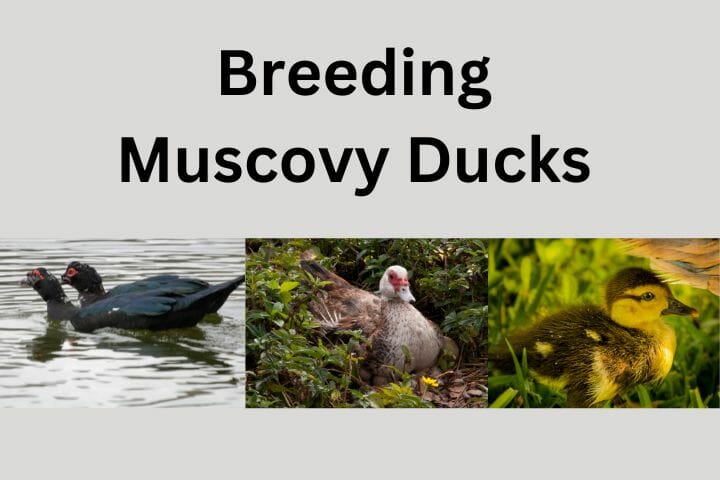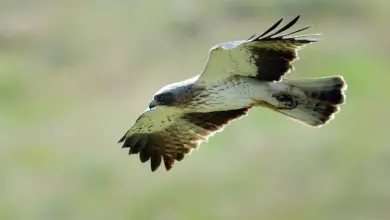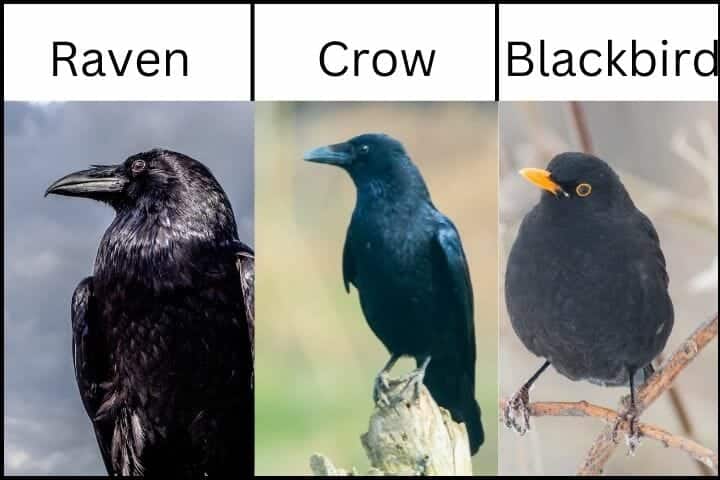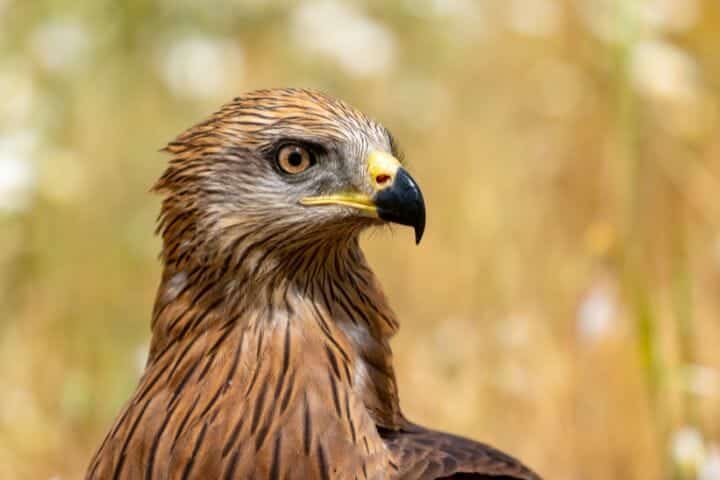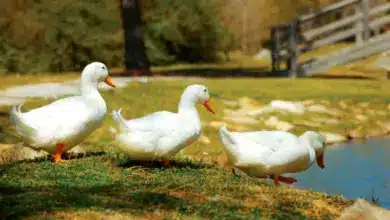The Sage-grouse (Centrocercus urophasianus) or Greater Sage-grouse, is the largest grouse in North America.
The Gunnison Sage-grouse was recently recognized as a separate species, and the Mono Basin population usually considered to belong to the Sage-grouse may also be distinct.
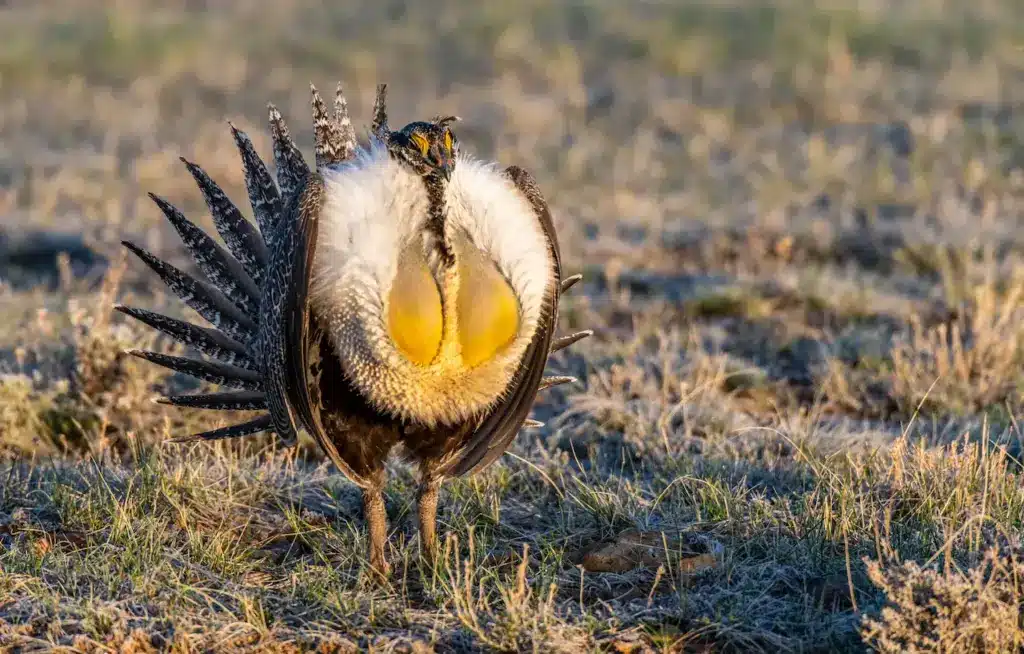
Distribution / Range
Its range is sagebrush country in the western United States and southern Alberta and Saskatchewan, Canada.
Description
Adults have a long, pointed tail and legs with feathers to the toes.
Adult males have a yellow patch over the eye, and are greyish on top with a white breast, a dark brown throat, and a black belly; two yellowish sacs on the neck are inflated during courtship display.
Adult females are mottled grey-brown with a light brown throat and dark belly.
Ecology
This species is a permanent resident. Some move short distances to lower elevations for winter. These birds forage on the ground. They mainly eat sagebrush, also insects, and other plants.
They are not able to digest hard seeds like other grouse. They nest on the ground under sagebrush or grass patches.
Sage-grouse are notable for their elaborate courtship rituals. Each spring males congregate on leks and perform a “strutting display”. Groups of females observe these displays and select the most attractive males to mate with.
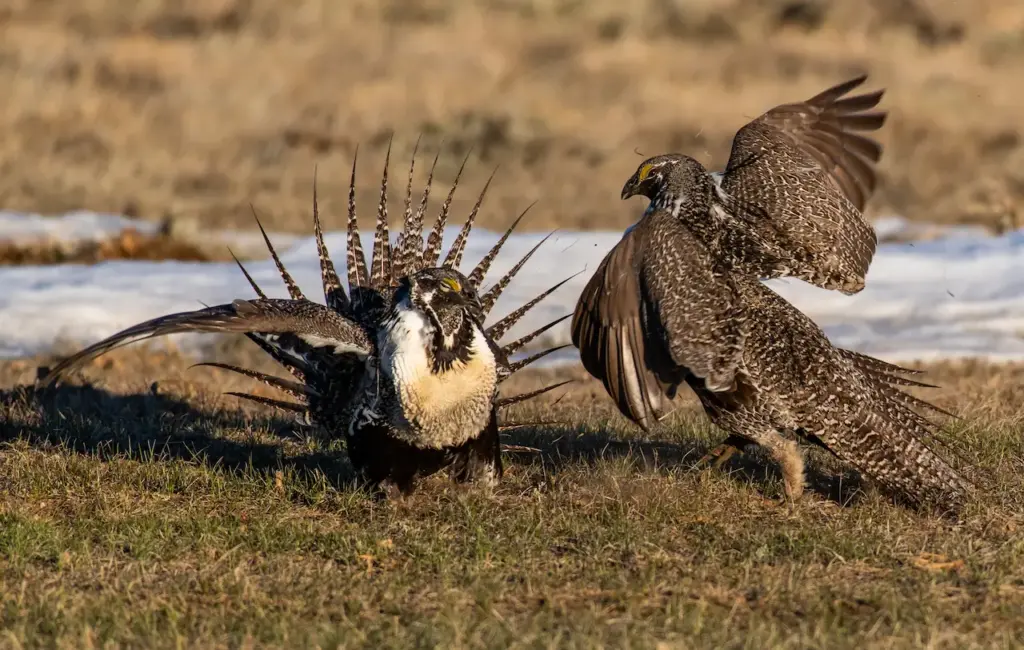
Only a few males do most of the breeding. Males perform on leks for several hours in the early morning and evening during the spring months. Leks are generally open areas adjacent to dense sagebrush stands, and grouse may use the same lek for decades.
Status
The numbers of these species are declining due to loss of habitat; their range has shrunk in historical times, having been extirpated from British Columbia, Kansas, Nebraska, Oklahoma, Arizona, and New Mexico.
Though the sage grouse as a whole is not considered endangered by the IUCN, local populations may well be so. These species have been petitioned for listing under the Endangered Species Act.
However, for political reasons, the US Fish and Wildlife Service has refused to list them. In May 2000, the Canadian Species at Risk Act listed the Centrocercus urophasianus phaios, formerly found in British Columbia, as being extirpated in Canada.
The Greater Sage-grouse is probably quite vulnerable to the change towards a more humid climate caused by global warming, which would reduce the semiarid sagebrush habitat. Subfossil bones e.g. from Conkling Cave and Shelter Cave of southern New Mexico prove that the species was present south of its current range at the end of the last ice age.

